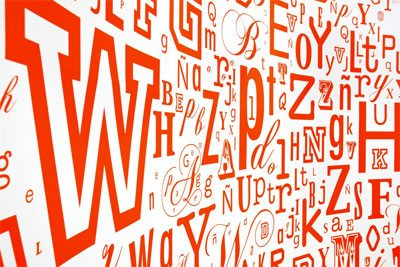 What’s the most important part of a website? When thinking about usability, most people think of images. Push further, and color, composition, and mobile compatibility could be mentioned. Although visual content is becoming more important daily, the majority of content on the Web is what it’s always been: Text. Typography – the style and appearance of words – is crucial to conveying your message effectively. Often, typography blends into the background: Think of the many years people regarded Times New Roman as the default business font.
What’s the most important part of a website? When thinking about usability, most people think of images. Push further, and color, composition, and mobile compatibility could be mentioned. Although visual content is becoming more important daily, the majority of content on the Web is what it’s always been: Text. Typography – the style and appearance of words – is crucial to conveying your message effectively. Often, typography blends into the background: Think of the many years people regarded Times New Roman as the default business font.
But, whether you notice it or not, typography is critical: When Calibri was introduced, “standard” practices changed overnight. Virtually all successful brands make conscious use of font in branding, advertising, and communication. Research has shown users often read only 20% of a page’s text, so every piece of text should be designed to maximize impact.
When planning for optimal user experience, consider these font and typography factors:
Font Face & Serifs
A University of Michigan study showed instructions written in hard-to-read fonts are perceived as hard to do – important insight for sales text. A highly legible font is more persuasive and users are more likely to act on what they see. Although many designers prefer sans serif fonts for the Web, no definitive research shows these fonts drive superior performance.

Font Size & Accessibility
In recent years, many sites have migrated to a best practice of 16 pixels for body copy. For many reasons, this is a sensible rule of thumb. First, vision naturally deteriorates with age in even the most healthy individuals. Second, about 5% of people worldwide suffer from vision impairment and related conditions that reduce ability to read smaller fonts.
Contrast
Contrast is the perceived difference in darkness between the background and the text color. Tacky misuse of contrast – like red text on a green background – is the hallmark of a bygone age of design. For those who’ve been on the Web the longest, it risks making a site look like an amateur “home page” instead of a respectable business!
Length & Section Length
Length is important in two key ways: The number of characters in each horizontal line and the length of each paragraph or section. Both long lines and long sections give people the impression that reading will take a lot of work. Short sections lend themselves to enticing headlines and other navigational aids, aligning with how people skim on the Web.
In the digital world, what you say and how you say it should always work together. Throughout the design and authoring of new pages, make sure your fonts are both eye-catching and easy to read. This will help raise your conversion rate and keep users on your site longer.
If you need design assistance, contact us today! Our team would be happy to help you!
